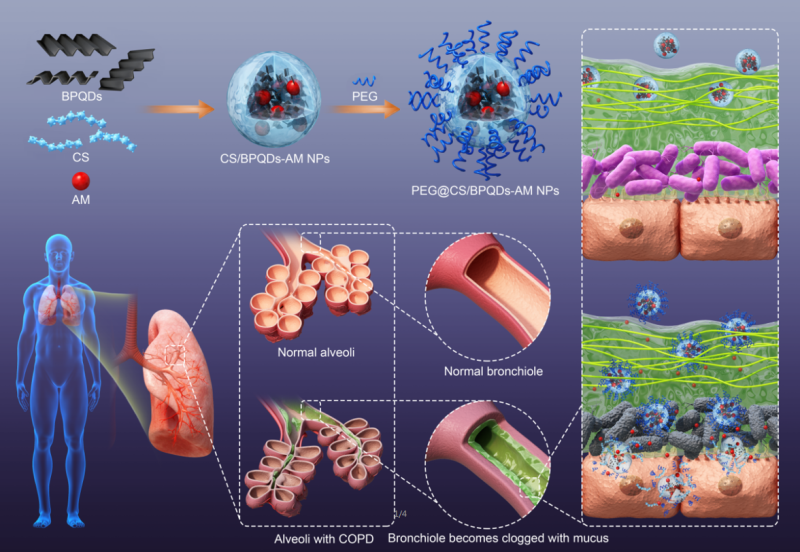Scientists Develop Mucus-Penetrating Nano-Vehicles for Efficient Therapy of Chronic Obstructive Pulmonary Disease
Date:23-07-2020 | 【Print】 【close】
Chronic obstructive pulmonary disease (COPD) is a kind of severe chronic inflammatory lung disease which could cause obstructed airflow and even death, according to the forecast of World Health Organization, COPD will rise to the third cause of death worldwide in 2030.
Due to the mesh-like structure, the sticky mucus layer of COPD patients could hinder the access to epithelium, which is being deemed as a permeation barrier. Besides, numerous bacterial pathogens in the mucus layer can form a dense biofilm with the lastingness of infection, lead to the defense of drug contact and cause multi-drug resistance.
Hence, there is an urgency to develop new strategies for addressing these issues.
Recently, the researchers from the Shenzhen Institutes of Advanced Technology (SIAT) of the Chinese Academy of Sciences collaborated with Zhongshan Hospital proposed a new strategy by combining PEGylated chitosan nanoparticles and biodegradable black phosphorus quantum dots (BPQDs) to deliver amikacin for the efficient therapy of COPD.
The study was published in Angewandte Chemie International Edition on July 16, 2020.
In this scenario, the PEGylated chitosan nanoparticles could readily penetrate through the mucus barrier on account of the good hydrophilicity of PEG and adhere onto mucous epitheliumon by the positive charge of chitosan.
What is more intriguingly is that the interior BPQDs could be rapidly degraded into nontoxic PO43- and acidic H+, promoted the dissociation of PEGylated chitosan nanospheres, accelerated the release of therapeutic amikacin, and eventually debilitated the vitality of biofilms for ease of eradication.
With regard to the satisfactory anti-infection effect and good biosafety, this delivery system holds great clinical potential in COPD therapy, and provides new design insights and fabrication ideas for other drug delivery systems either.

Schematic diagram illustrating the fabrication process of PEG@CS/BPQDs-AM NPs and biomedical application as a drug delivery system that penetrates pulmonary mucus layer, releases therapeutic agents, and inactivates pathogenic bacteria to alleviate COPD. (Image by Zhibin Li)
Media Contact:
ZHANG Xiaomin
Email: xm.zhang@siat.ac.cn